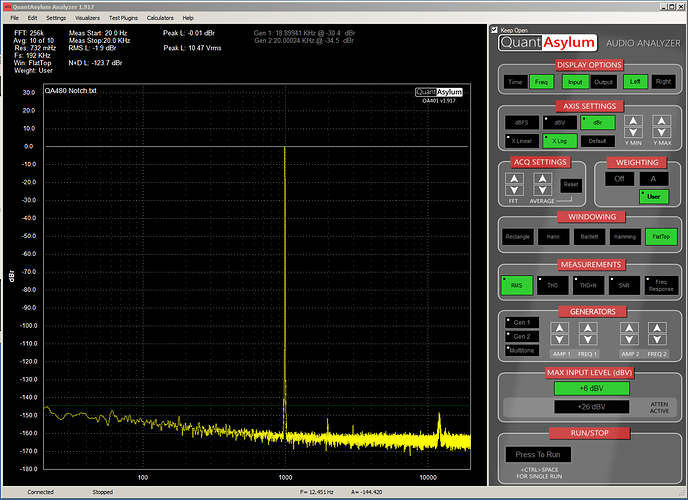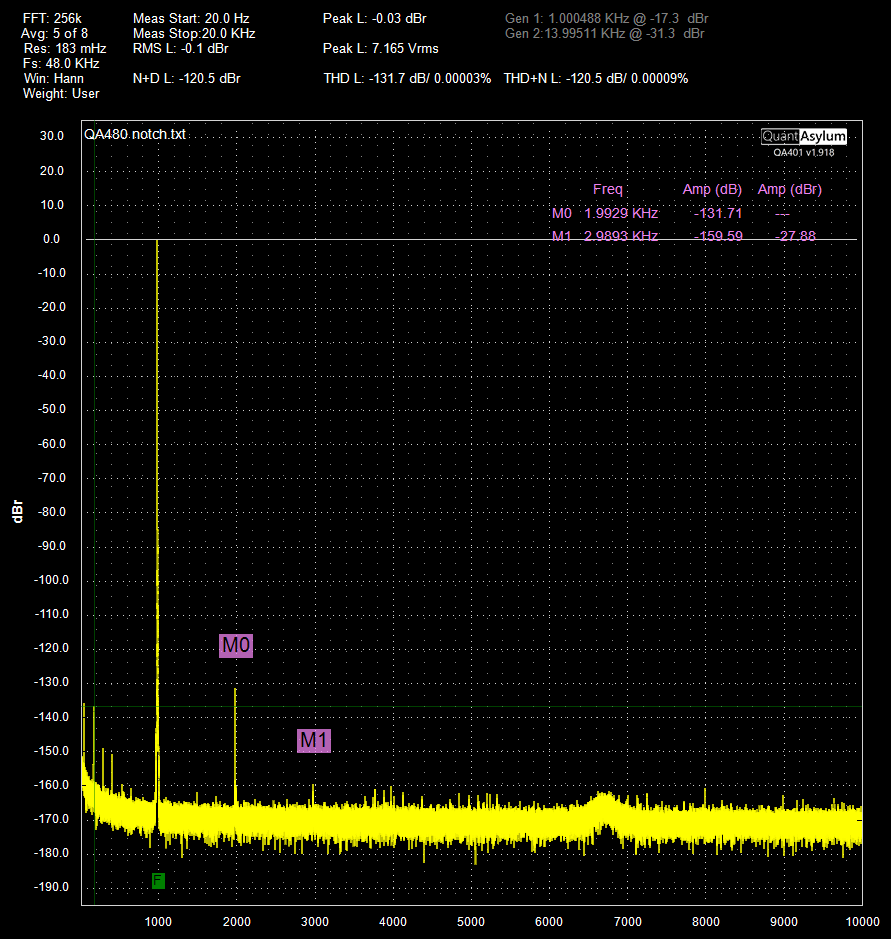Update time.
I experimented some more and discovered that the PowerWedge power strip slash power filter I’d been using was causing the basic 60 Hz and harmonics in the basic QA401 measurement. It has isolation transformers within, and they must just be radiating just enough. This was picked up even 4 feet away. (I’ve ordered a new power strip…) Using the USB hub seemed not to matter much. This is the QA401 by itself with the new noise floor - no notch weighting - actual Vrms.
Then, I tried just looking at the notch filter output with the input shorted.
I think this reveals the limitations for second harmonic measurement.
Now, this is the oscillator output into the notch filter, with 0 dB of attenuation.
Exact same thing with 5 dB of attenuation for the oscillator.
The absolute “hum” levels don’t change. Finally, I tried reorienting the QA480. Best performance was with the QA480 sitting on its side a couple feet away from the computer and the QA401.
That’s suggesting to me that it may be the cables, since the attenuator doesn’t change the hum levels. It’s hard to separate cable orientation and positioning from QA480 positioning.
So, if anybody has some magic solutions, I’m all ears. I think that any power amplifier I might have on the bench will probably radiate enough to get into this measurement, so unless I run very long cables and put the DUT in the next room, I may need a better solution.










 I’ll hook it up to the scope and QA401 and another analyzer here over the next few days. The case build quality looks excellent. 350mA draw according to the USB tester. Thanks Matt!
I’ll hook it up to the scope and QA401 and another analyzer here over the next few days. The case build quality looks excellent. 350mA draw according to the USB tester. Thanks Matt!